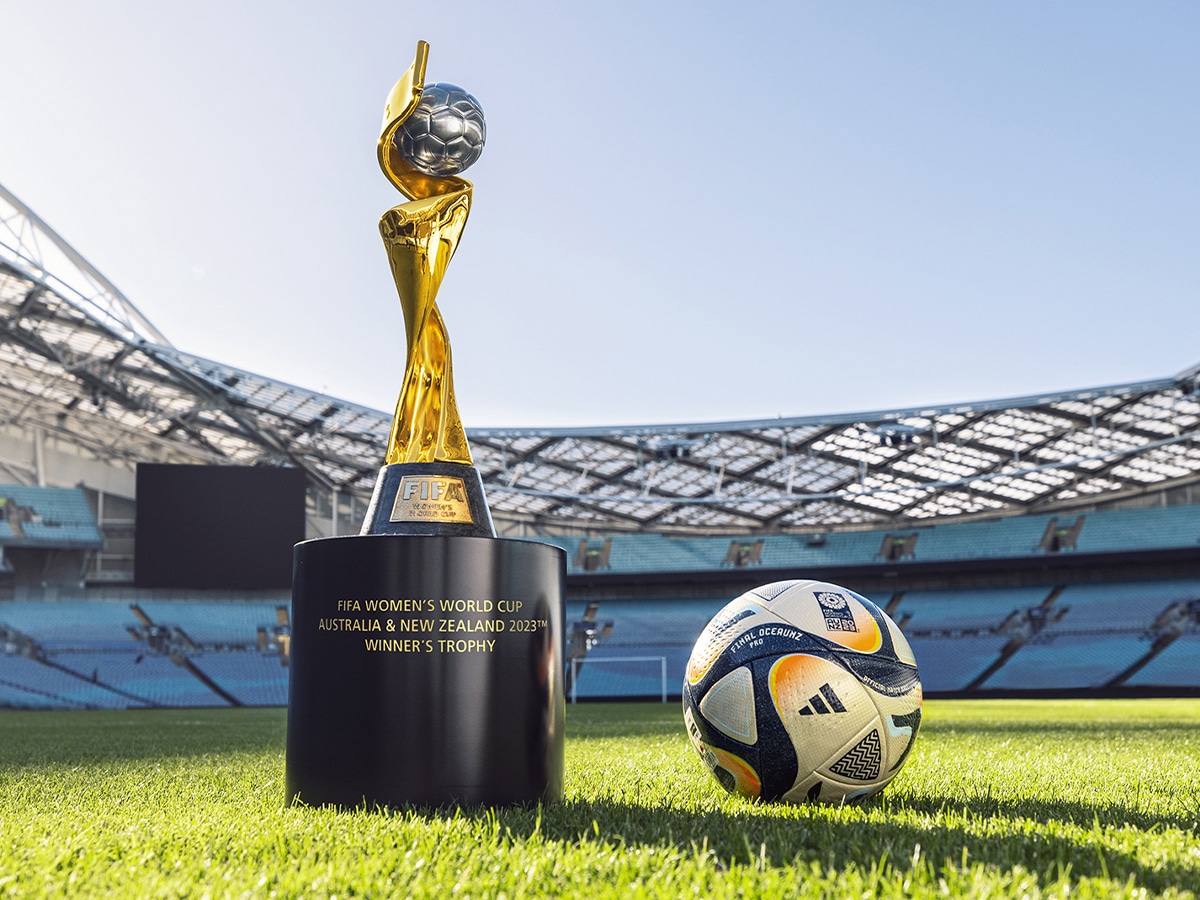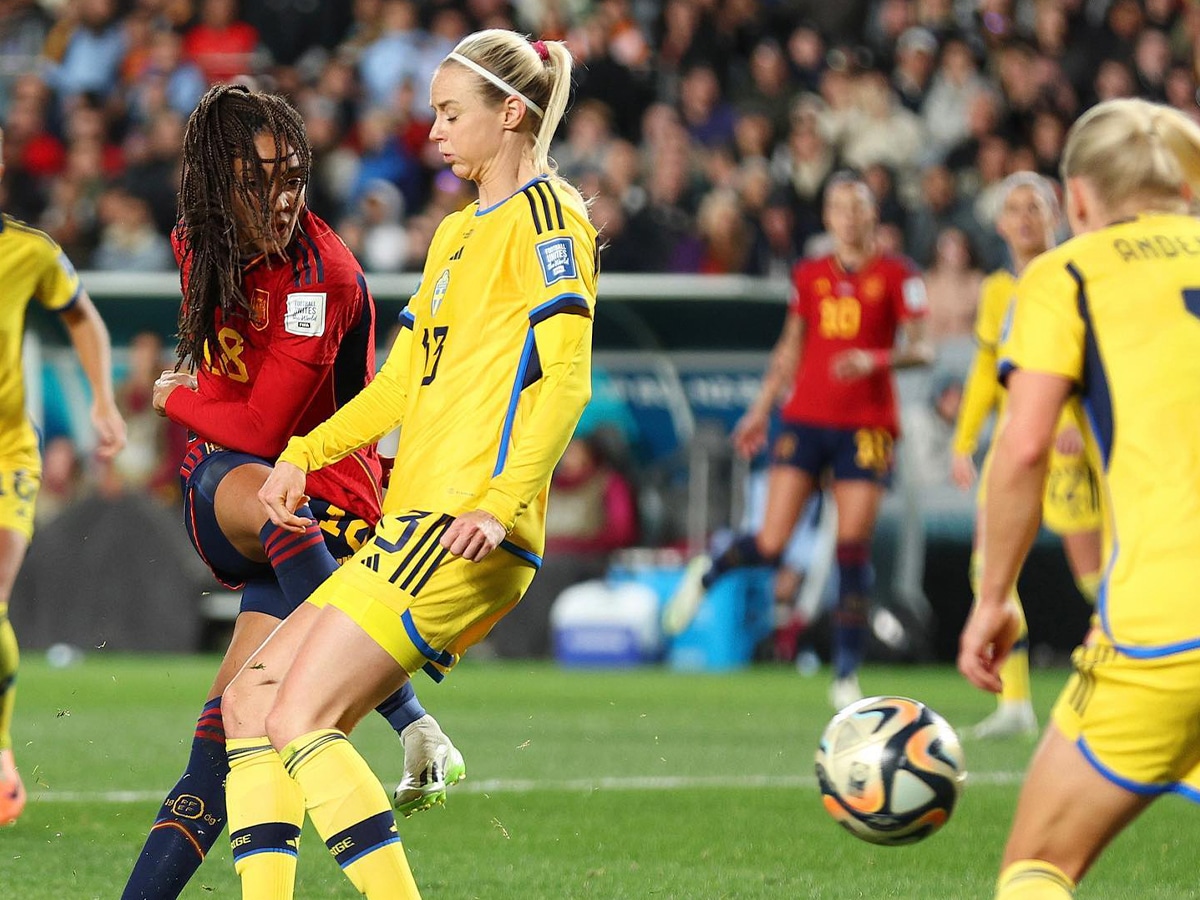
Published:
Readtime: 6 min
Every product is carefully selected by our editors and experts. If you buy from a link, we may earn a commission. Learn more. For more information on how we test products, click here.
Ever wondered what makes the FIFA World Cup Ball so special? Aside from simply being thrashed around by the best football players in the world, it turns out the small round orb that sports fans are fixated on is actually home to a host of futuristic technological features. From ball speed, distance travelled and player position tracking, the OCEAUNZ Final Official Match Ball is the first FIFA Women’s World Cup Final Official Match Ball to feature connected ball technology, but what exactly does that mean?

What is Connected Ball Technology?
Connected ball technology is a new feature implemented into FIFA match balls that aids in recording data and provides insights into match statistics. While it sounds like a buzzword designed to embellish, connected ball technology does have its place in world football. The unique piece of technology works in tandem with player position data and makes use of artificial intelligence to accurately assess movement and spacing. In its simplest form, connected ball technology aids in FIFA’s semi-automated offside technology, offering Video Assistant Referees “instantaneous information” to help ensure accurate and timely decision-making.
Additionally, the technology enhances the overall fan viewing experience, offering accurate measurement of in-play data. For the 2023 tournament, fans will be able to view insights around the ball’s speed, spin and distance travelled before hitting the back of the net.
Importantly, this isn’t the first time it’s being tested. Connected ball technology has been used in a number of tournaments over the past few years, including the FIFA Arab Cup, FIFA Club World Cup 2021 in Abu Dhabi and the 2022 FIFA World Cup in Qatar. According to adidas, the creator of the ball, those implementations only came after “rigorous and robust” testing with a number of professional and grassroots football clubs around the world, with no perceived change to performance.

How It Works
To put it simply, the new connected ball technology works via a series of internal sensors and movements. According to adidas, the ball features a Suspension System at its centre that hosts and stabilises a 500Hz inertial measurement unit (IMU) motion sensor. This sensor tracks and analyses data on every element of the movement of the ball, without altering the trajectory or roll of the equipment. The sensor is powered by a rechargeable battery, which can be charged by induction.
The implementation was developed by adidas in close collaboration with FIFA and sensor network business KINEXON, with the goal of improving live data. It enables the Video Match Officials to review insights for the first time by “automatically providing very accurate information, 500 times per second, on when a player has touched the ball”.
As a result, the tracking processes will help inform offside situations as well as assist in detecting unclear touches. The ultimate goal of which is to improve the quality and speed of VAR decision-making operation.

2023 FIFA Women’s World Cup Ball
While the connected ball technology is a handy addition to the referees’ arsenal, the ball itself is well worth noting. On August 14, adidas unveiled the new OCEAUNZ Final Official Match Ball, which is destined to be used in the semi-finals, third-place play-off, and final of the FIFA Women’s World Cup Australia and New Zealand 2023.
Much like past iterations, the new World Cup ball takes inspiration from the natural surroundings of the host nation, this time drawing cues from the iconic Sydney skyline. According to Solène Störmann, global category director for Football Hardware at adidas, the warm orange and gold colouring is designed to provide a subtle nod to the evening sunsets that “shimmer” across the city, as well as the golden colour of the coveted FIFA Women’s World Cup trophy.
“As the sun comes down on the FIFA Women’s World Cup, it’s important to reflect on how remarkable the tournament has been and honour the moment, using the ball at the heart of that celebration,” Störmann said. “This is also a ball that looks towards the football of tomorrow via a one per cent contribution of net sales towards initiatives supporting the communities shaping the game for the next generation of female football players.”

CTR-CORE
Revealed ahead of the first semi-final, the new OCEAUNZ Final Official Match Ball is the first FIFA Women’s World Cup Final Official Match Ball to feature connected ball technology, however, there are a few additions thrown in. The first is a new core that adidas is labelling ‘CTR-CORE’. This feature is designed to improve accuracy and consistency with maximum shape and air retention.
SPEEDSHELL
Also coming to the official match ball for the first time is a SPEEDSHELL polyurethane (PU) skin. As per adidas, this design features a new 20-piece panel shape to enhance aerodynamics. According to Störmann, these subtle upgrades are part of a long-term plan to gradually improve the viewer experience each year, with the final set to mark a significant milestone.
“All eyes now turn towards Sydney for the finale of one of the most exciting tournaments in living memory,” Störmann continued. “We can’t wait to see the new OCEAUNZ ball in play on the biggest stage and wish all teams the best of luck in the final stages of the tournament as they compete for the game’s most coveted prize.”

Where to Buy the 2023 FIFA Women’s World Cup Ball
For football fans who want to take a piece of the 2023 FIFA Women’s World Cup home with them, there’s good news. adidas has confirmed that the official match ball will be available to purchase. Priced at €150 (AUD$240), the OCEAUNZ Final Official Match Ball is stocked in selected adidas retailers and online.


































Comments
We love hearing from you. or to leave a comment.